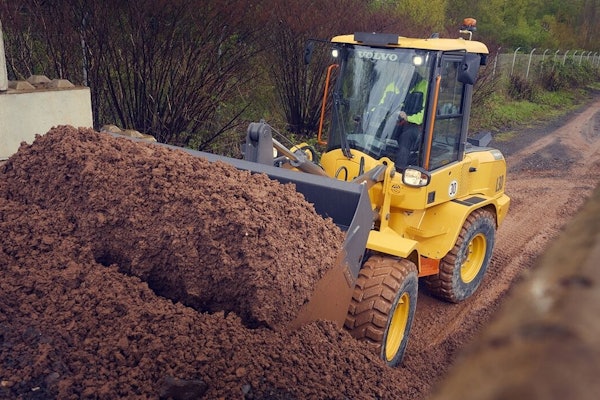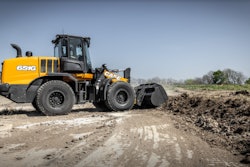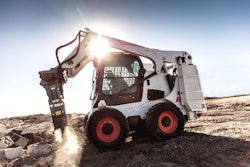Tracked excavators in the 16- to less-than-21-metric-ton range sit on the cusp between compact models and medium size diggers. Utility size crawler excavators will earn your appreciation as they perform roadwork without taking up the entire street, tackle demolition projects, dig trenches and lay pipes.
Most machines in this size class are available in configurations that let you choose arm lengths ranging from 8 feet 6 inches to 10 feet 2 inches, track widths from 20 to 28 inches, and bucket sizes to fit your applications. Transportation widths and heights vary by state and municipality but utility size excavators are usually within DOT parameters.
Excavator intelligence is expanding, too. Cat’s E-ceiling function, for example, monitors a height limit set by the operator and halts vertical movement of the boom/stick if the bucket exceeds that height. Machine control systems in this size category distribute information to remote computers, and GPS systems put a virtual security fence around the machine. Greater coordination between the hydraulic system and the engine, as seen on Terex’s new e-POS function, optimizes the excavators’ productivity while minimizing fuel consumption.
Features in current models include:
· Low effort joystick control patterns, like those found on the new Gradall and JCB excavators, make operating the machine easier, which can be an important consideration for new operators.
· Power boost functions provide extra hydraulic muscle on demand. New Holland’s model allows you to use the power boost feature continuously with no time limits.
· Increased dump heights of up to 22 feet 11 inches rival those of larger machines, good for loading trucks.
· High flow hydraulics power attachments that require extra oomph such as breakers.
· Models with front end dozer blades, like Kobelco’s Blade Runner, do double duty allowing you to backfill and grade with one machine.
· Comfort features such as significantly more powerful air-conditioning, lower noise levels, wider cabs and fully reclining seats help keep operators fresh and alert.
· Daily maintenance and servicing is streamlined with better component placement, improved access swing out panels and hydraulic oil filters that, as one manufacturer says, keeps the oil cleaner than the day it was put in.
Doosan DX180LC
Operator comfort is a key priority on Doosan’s DX180LC, featuring a six-way adjustable seat, ergonomically designed cab and transparent roof section for improved visibility. The DX180LC electronic power optimizing system ensures power and fuel consumption are maximized in every work mode with functions such as an auto deceleration system and a cross-sensing pump system.
Volvo EC160CL
Volvo’s EC160CL’s advanced control system balances engine power with hydraulic pump output to provide maximum digging, lifting, and production with minimal fuel consumption. The transparent roof hatch opens and combined with a reduced engine hood size gives improved visibility. A new hydraulic main control valve and higher torque swing motor improve the machine’s speed during combined operations.
New Holland E175B
New Holland’s newly redesigned E175B now has a 6 percent longer undercarriage on the EL version for added stability. A rear camera gives the operator a continuous view of the work area behind the machine using a dedicated screen in the cab. The E175B has normal and maximum-working modes and two attachment modes for one and two-way pump flow.






